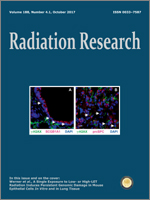Cranial radiation severely affects brain health and function, including glial cell production and myelination. Recent studies indicate that voluntary exercise has beneficial effects on oligodendrogenesis and myelination. Here, we hypothesized that voluntary running would increase oligodendrocyte numbers in the corpus callosum after irradiation of the juvenile mouse brain. The brains of C57Bl/6J male mice were 6 Gy irradiated on postnatal day 9 during the main gliogenic developmental phase, resulting in a loss of oligodendrocyte precursor cells. Upon adulthood, the mice were injected with bromodeoxyuridine and allowed to exercise on a running wheel for four weeks. Cell proliferation and survival, Ascl1 oligodendrocyte precursor and Olig2 oligodendrocyte cell numbers as well as CC1 mature oligodendrocytes were quantified using immunohistology. Radiation induced a reduction in the number of Olig2 oligodendrocytes by nearly 50% without affecting production or survival of new Olig2 cells. Ascl1 cells earlier in the oligodendroglial cell lineage were also profoundly affected, with numbers reduced by half. By three weeks of age, Olig2 cell numbers had not recovered, and this was paralleled by a volumetric loss in the corpus callosum. The deficiency of Olig2 oligodendrocytes persisted into adulthood. Additionally, the depletion of Ascl1 progenitor cells was irreversible, and was even more pronounced at 12 weeks postirradiation compared to day 2 postirradiation. Furthermore, the overall number of CC1 mature oligodendrocytes decreased by 28%. The depletion of Olig2 cells in irradiated animals was reversed by 4 weeks of voluntary exercise. Moreover, voluntary exercise also increased the number of Ascl1 progenitor cells in irradiated animals. Taken together, these results demonstrate that exercise in adulthood significantly ameliorates the profound and long-lasting effects of moderate exposure to immature oligodendrocytes during postnatal development.
How to translate text using browser tools
4 August 2017
Exercise in Adulthood after Irradiation of the Juvenile Brain Ameliorates Long-Term Depletion of Oligodendroglial Cells
Cecilia Bull,
Christiana Cooper,
Veronica Lindahl,
Sylvia Fitting,
Anders I. Persson,
Rita Grandér,
Ann-Marie Alborn,
Thomas Björk-Eriksson,
H. Georg Kuhn,
Klas Blomgren
ACCESS THE FULL ARTICLE

Radiation Research
Vol. 188 • No. 4
October 2017
Vol. 188 • No. 4
October 2017




